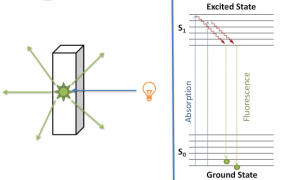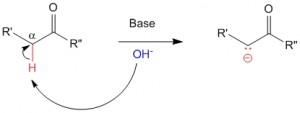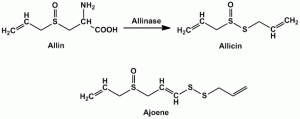Aldol condensation reaction can be either acid catalyzed or base catalyzed. This page deals with the base catalyzed reaction of aldol condensation and its mechanism. This reaction was thought to occur only with aldehydes. However, it has been realized that a similar reaction would occur with ketones and reactive carbonyl compounds with available α-hydrogens (the need for these α-hydrogens will be apparent from the below mechanism).
The reaction proceeds with the condensation of an aldehyde (or carbonyl compound) with an enol. The product formed has an aldehyde (or carbonyl) group and a β-hydroxy (alcohol) group, giving the product the name aldol (or if the carbonyl compound is a ketone it maybe called a ketol). This condensation is often followed by spontaneous dehydration due to β-elimination to produce an α,β-unsaturated aldehyde or α,β-unsaturated ketone.
The mechanisms for acid catalyzed aldol condensation and base catalyzed aldol condensation is significantly different. While bases activate the nucleophile, acids activate the electrophile in the reaction.
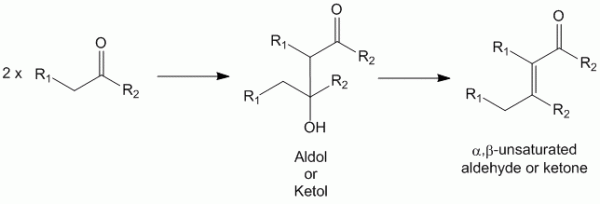
It must be noted that aldol condensation is an integral mechanism of Robinson annulation as well.
Mechanism of Base Catalyzed Aldol Condensation
Step 1
In step 1, an enolate is formed by the abstraction of the alpha-hydrogen of the carbonyl compound with the help of a base.

Step 2
In step 2, the enolate attacts the second carbonyl molecule. This leads to formation of another ionic species which extracts the proton from the protonated base (HB). This finally leads to the formation of the aldol (or if a ketone was present as the starting material, a ketol).
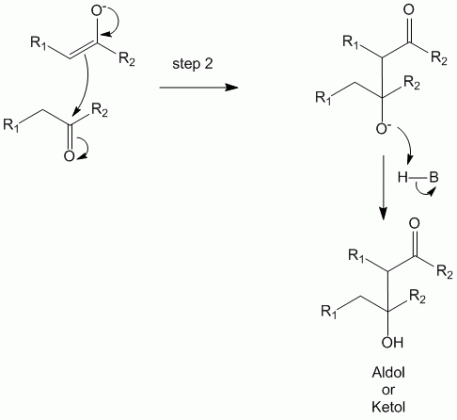
Step 3
In step 3, the aldol (or ketol) undergoes spontaneous dehydration due to base catalyzed dehydration to yield the α,β-unsaturated aldehyde or α,β-unsaturated ketone.

Books on Organic Chemistry
Check out some of the best textbooks for Organic Chemistry
References
- Advanced Organic Chemistry: Reactions and synthesis. By Francis A. Carey, Richard J. Sundberg
- Organic Chemistry, 6th Edition. By Robert T. Morrison and Robert N. Boyd
- Organic-Chemistry.org – http://www.organic-chemistry.org/namedreactions/aldol-condensation.shtm(accessed on June 26, 2011)

